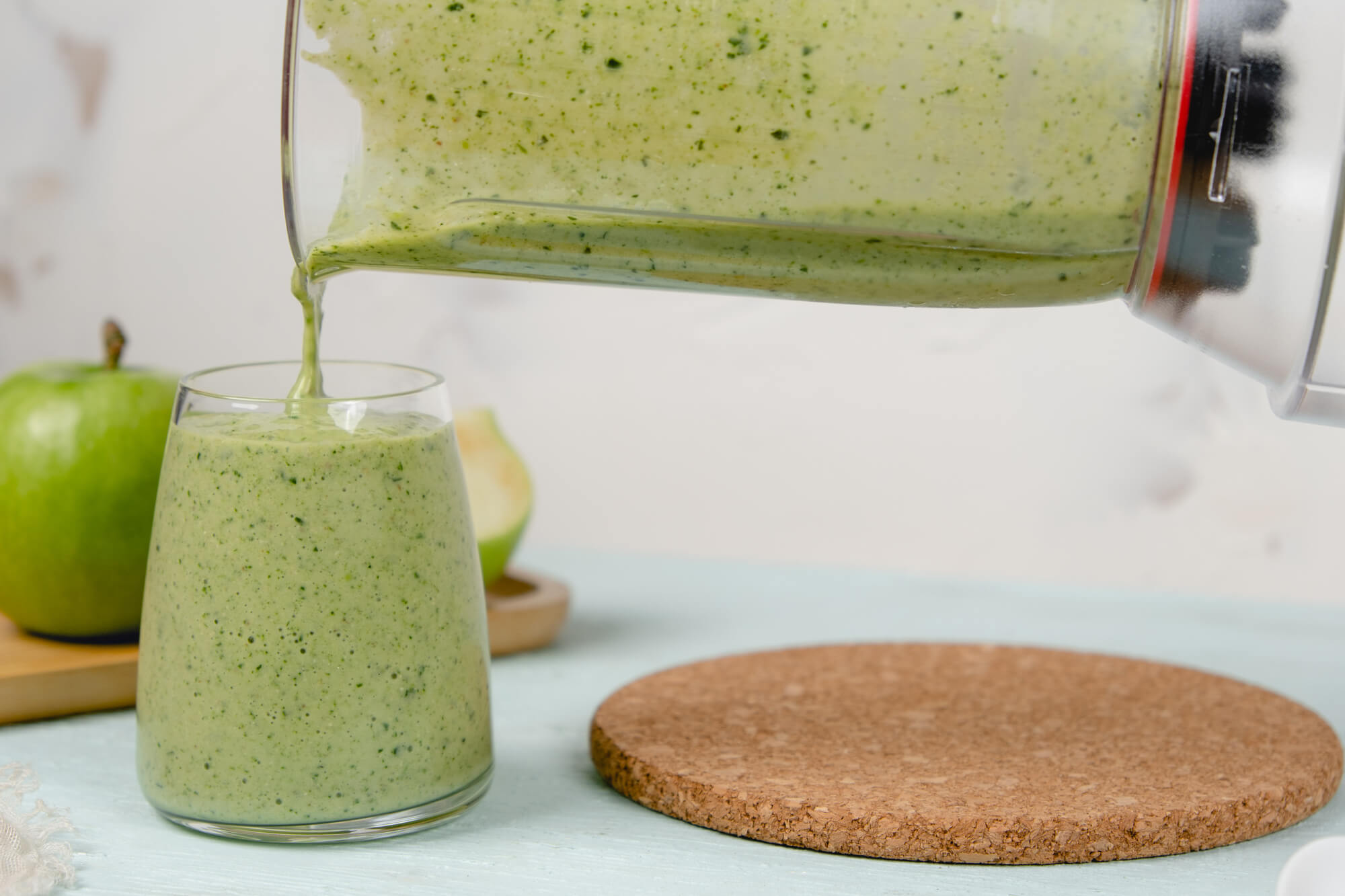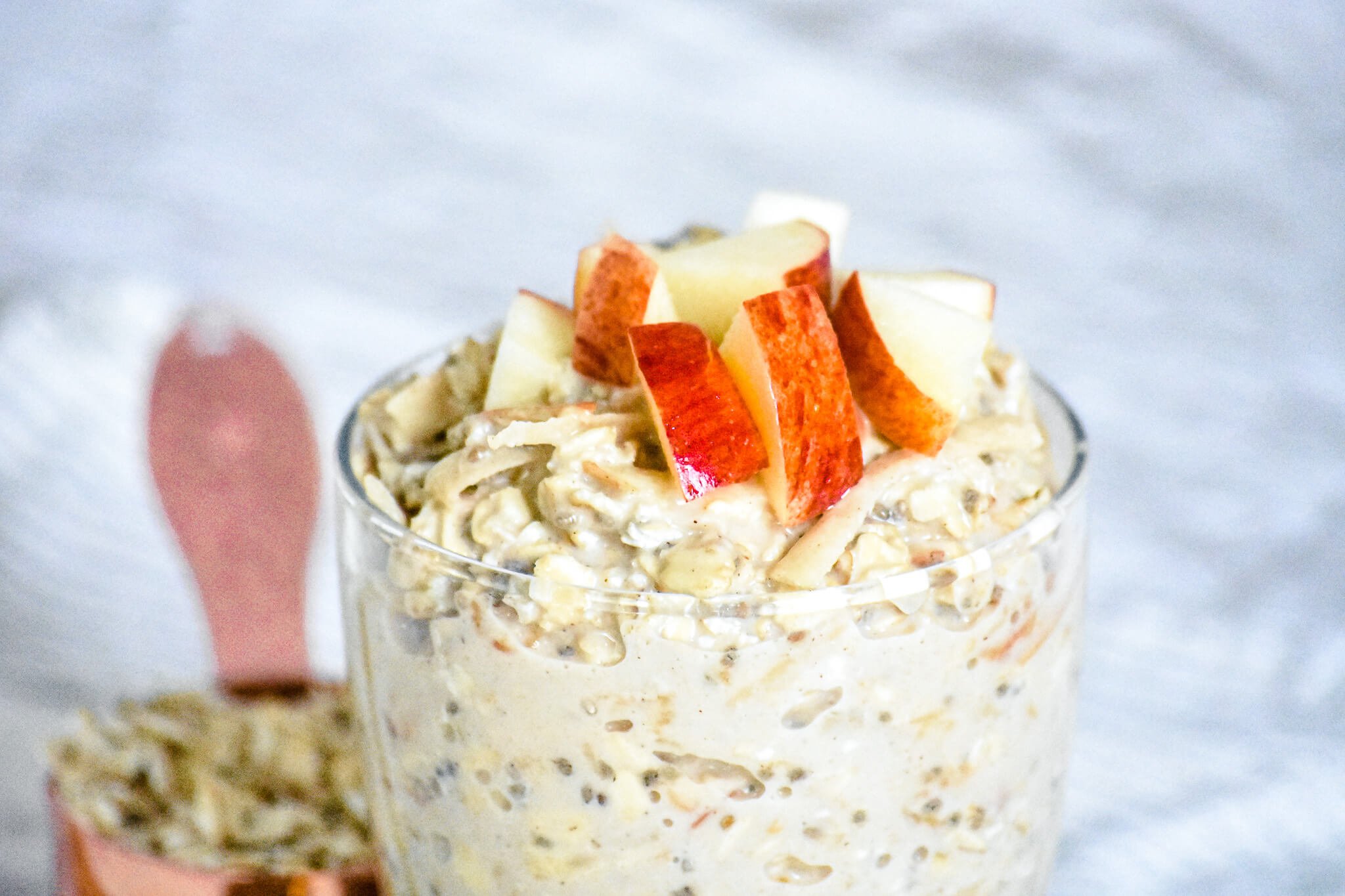Ah, fiber. We’ve all heard about it. We know we are supposed to get more fiber in our diet and that it keeps us regular and feeling - not so backed up. However, if you’re anything like me, that’s about all I know.
When I started becoming more health conscious a few years ago, I learned that fiber does so much more for the body than help us go to the bathroom. It also affects blood sugar, cholesterol levels, and satiety, which means it can impact our overall well-being and help us feel full.
As an adult female, I am supposed to get about 21 to 25 grams of fiber per day (it’s about 30 to 38 grams for adult men). So, in the quest to eat more fiber, I started looking for ways to add to my daily intake.
I knew that foods like flax seeds and beans had fiber, as well as whole grains, like wheat and oats.
But I started to wonder if beverages made from these foods are also high in fiber, specifically oat milk, which is one of my favorite dairy milk substitutes.
In this post, we’ll take a look at the role of fiber in our bodies and whether oat milk is a good source of fiber to incorporate into your daily diet.
Quick Answer
Does oat milk have fiber?
Oat milk contains 2 grams of fiber on average. The amount of fiber in oat milk varies depending on the brand.
What’s Fiber and Why is It So Important for the Body?
So what exactly is fiber? Fiber is a type of carbohydrate that’s found in foods like legumes (think beans and lentils), nuts, whole grains, veggies, and fruits.
Unlike other carbohydrates, our bodies cannot break down fiber during digestion, so it passes through our system intact instead of being turned into energy.
There are two main types of fiber - soluble and insoluble. Each of these has a different purpose in the body and comes from different sources.
Soluble Fiber | Insoluble Fiber |
|---|---|
Dissolves in water | Doesn't dissolve in water |
Promotes satiety | Promotes laxation |
Lowers cholesterol | Supports intestinal health |
Supports gut flora | Creates bulk in your stool |
Improves blood sugar | Supports bowel health |
Soluble Fiber
Soluble fiber forms a gel-like substance as it mixes with water in the digestive tract and is found in foods like beans and oats.
This “gel” helps slow digestion, allowing your body more time to absorb nutrients and stabilizing blood sugar levels.
Soluble fiber can also help you lower cholesterol levels. This is because it binds with cholesterol molecules to prevent them from being absorbed into your bloodstream.
That’s why you often see words like “heart healthy” on high-fiber foods like cereals and oatmeal.
Insoluble Fiber
Insoluble fiber is not soluble in your digestive tract.
Found in foods like vegetables, whole grains, and nuts, this type of fiber is one that helps regulate your bowel movements and prevents constipation.
This healthy movement through the digestive system can prevent gastrointestinal issues, bulk your stool, and help you feel full after eating.
How Much Fiber We Need Each Day
Getting enough fiber is essential for your overall health. As I mentioned in the introduction, the Recommended Daily Allowance (RDA) for fiber is up to 25 grams for adult women and 38 grams for adult men.
However, most people don’t get enough fiber. Harvard University reports that American adults only get 10 to 15 grams of fiber daily.
This is problematic because adequate fiber intake can drastically improve your health.
A 2019 meta-analysis found that eating more fiber can reduce their risk of dying of type 2 diabetes, stroke, cardiac disease, and colon cancer by around 15% to 30%.
The same analysis reported that eating between 25 grams and 29 grams of fiber per day provided the greatest risk reduction.
Does Oat Milk Have Fiber?
We know that oats have fiber - in fact, oats have about 8 grams of fiber in one cup of dry oats.
This includes beta-glucan, an important type of fiber with anti-obesity, anti-allergic, anti-inflammatory, and anti-osteoporotic characteristics.
However, this fiber is mostly located in the outermost portion of oats, known as the bran.
This means that whole oats, steel-cut oats, and rolled oats have the highest fiber content.
As I discovered when looking into the fiber content of oat milk, many companies don’t use the entire oat kernel when making their product.
While some, like Elmhurst 1925, use whole oats, other brands use pre-cut oats, which are then broken down into slurry using the enzyme α-amylase.
Depending on how the oat milk is made, this can lower the fiber transferred to the final product.
Below are a few popular oat milk products/brands and their fiber content to help you get an idea of how much fiber you can expect in one 8-ounce serving of oat milk:
Oat Milk Brand | Fiber Per Serving |
|---|---|
2g | |
1g | |
2g | |
0g | |
3g | |
3g |
Based on my research, you can expect to find between 0 to around 3 grams of fiber per serving.
Brands that use the whole oat and are less processed tend to have the most fiber, while barista brands and highly processed options have fewer grams of fiber per cup.
So, while most oat milk doesn’t contain a huge amount of fiber, you can add to your daily intake with a cup of this non-dairy beverage.
For instance, if you have 2 cups of Elmhurst Oat Milk, you can get about 6 grams of fiber, which is around 1 to 2% of your RDA, depending on your specific needs.
Using our handy plant-milk database, you can search for a particular brand to see how much fiber your favorite product contains.
Fiber in Oat Milk Compared to Other Plant-Based Beverages
As much as I like oat milk, I sometimes want to drink plant-based milk with a lower carbohydrate count.
Oat milk tends to have about 16 grams of carbs, which is a bit high when I’m focused on low-carb eating.
To determine whether I’d lose out on fiber by drinking something like cashew or almond milk, I looked at the fiber content of oat milk versus these other beverages.
Using the average 2 grams of fiber per serving for oat milk, this is how it stacks up to fiber in other non-dairy drinks:
Milk Brand | Fiber Per Serving |
|---|---|
1g | |
0g | |
2g | |
0g | |
0g | |
0.6g |
Based on these numbers, oat milk has the highest fiber content of all plant-based milks.
Almond milk and hemp milk may have a bit of fiber depending on the manufacturer but still don't have the same amount of fiber as the high-fiber oat milk.
Choosing a Higher-Fiber Oat Milk
If you want to choose higher-fiber oat milk, you can base your decision on the following advice from Harvard Health.
According to this article on fiber, you can select a product with a 1:5 ratio of fiber to carbohydrates.
If you can’t find oat milk with this amount (which is probably likely), opt for oat milk with at least 1 gram of fiber for every 10 grams of carbohydrates.
If we look at the oat milk options from the previous section, you can see which would fall into this high-fiber category:
Oat Milk Brand | Fiber to Carb Ratio |
|---|---|
2 grams fiber to 16 carbs (1:8 ratio) | |
1 gram to 22 grams carbs (1:22 ratio) | |
2 grams fiber to 14 grams carbs (1:7 ratio) | |
0 grams to 13 grams carbs (0:13 ratio) | |
3 grams to 17 grams carbs (about 1:4 ratio) | |
3 grams to 23 grams carbs (about 1:8 ratio) |
Wholefoods 365, Willa’s, Elmhurst, and Forager are the best choices for high-fiber oat milk based on the recommended ratios.
Incorporating Oat Milk Into Your Fiber-Rich Diet
If you’re looking to increase your fiber intake, oat milk can be a beneficial food to incorporate into your diet.
You can drink a glass on its own, or use oat milk in various recipes to boost their fiber content and get more of this important nutrient each day.
I like to use oat milk in the following recipes to add a bit more fiber and give them a creamy, delicious flavor and texture:
Oatmeal
I love a heaping cup of steel-cut oats made with oat milk. Just substitute your favorite oat milk for water or dairy milk.
Then, I boost the fiber content with toppings like berries, bananas, chia seeds, or flax seeds to get a heaping dose of fiber to start my day.
Smoothies
To make a fiber-filled smoothie, I like to use oat milk combined with frozen spinach, nut butter, chia seeds, and my favorite fruit and protein powder.
(pro tip: buy a bag of fresh spinach and freeze it yourself. You get more of the leaves, which gives you a smoother smoothie).

Soups
I sometimes use oat milk in my soups to give them a fiber boost.
Combined with other fiber-rich ingredients like quinoa, lentils, and beans, this gives me a rich dish that keeps me full and happy.
Overnight Oats
Overnight oats are similar to a chia pudding or cooked oatmeal.
They are easy to make, and you can substitute oat milk for your favorite recipes, like our Almond Milk Overnight Oats.

Put high-fiber toppings like fruit, nut butter, and seeds in or on your overnight oats for a delicious dish to start your day or for a midday snack.
My favorite is combining oats, chia seeds, and hemp hearts with oat milk, peanut butter, and cocoa powder for a dessert-like breakfast.
Yes, Oat Milk Has Fiber!
Oat milk can be a good way to supplement your daily fiber intake while maintaining a plant-based or dairy-free diet.
With around 2 to 3 grams of fiber per serving, oat milk can help boost your fiber consumption for better digestive and heart health.
It has one of the highest fiber contents of alternative milk, often having more than almond, cashew, rice, walnut, and soy milk.
If you are looking for a smooth, creamy, delicious plant milk to give you more fiber, oat milk is a great choice.
